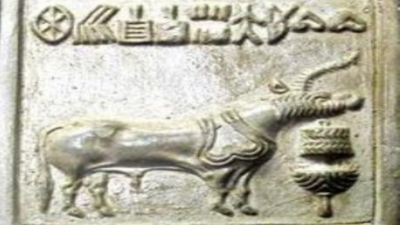- News
- City News
- ahmedabad News
- Indus script 'syntax' matches modern languages in Gujarat: Study
Trending
This story is from February 13, 2023
Indus script 'syntax' matches modern languages in Gujarat: Study
The famed Harappan-era seals and tablets show various symbols - indicating a writing system or possible script. However, even a century after the discovery of Harappa in 1924, the script has remained an enigma for researchers.

Other speakers including Nisha Yadav and Pallavee Gokhale also elaborated on the aspects of the script.
AHMEDABAD: The famed Harappan-era seals and tablets show various symbols - indicating a writing system or possible script. However, even a century after the discovery of Harappa in 1924, the script has remained an enigma for researchers.
In the international colloquium 'Emerging Perspectives of the Harappan Civilization' that concluded at IIT Gandhinagar (IIT-Gn) on Sunday, the experts put forth ideas to understand the nature of the writings.
Mohd Izhar Ashraf, a research associate at computational epigraphy lab at Chennai-based Institute of Mathematical Sciences (IMSc), told TOI that they have used statistical model on the known writings from Harappan Civilization.
"Through this approach, we do find a syntax, like in any modern language. We compared it with 20-odd modern and ancient languages and found that it fits perfectly. For example, alphabet S has more recurring frequency in English language. Similarly, we find same symbols getting repeated at the end," he said.
He was also one of the speakers at the event.
Other speakers including Nisha Yadav and Pallavee Gokhale also elaborated on the aspects of the script.
Ayomo Konasakuwa from Kyoto University argued that if one sees the evolution of inscriptions from the early Harappan phase to maturity of the civilization, the initial writings have 71 symbols that later increased manifold over centuries.
He also pointed at the direction of the animals in the seals and recurring symbols such as diamond, fish, spear, etc., over the geography of the civilization.
In the international colloquium 'Emerging Perspectives of the Harappan Civilization' that concluded at IIT Gandhinagar (IIT-Gn) on Sunday, the experts put forth ideas to understand the nature of the writings.
Mohd Izhar Ashraf, a research associate at computational epigraphy lab at Chennai-based Institute of Mathematical Sciences (IMSc), told TOI that they have used statistical model on the known writings from Harappan Civilization.
"Through this approach, we do find a syntax, like in any modern language. We compared it with 20-odd modern and ancient languages and found that it fits perfectly. For example, alphabet S has more recurring frequency in English language. Similarly, we find same symbols getting repeated at the end," he said.
Sitabhadra Sinha, professor of theoretical physics at IMSc, is among the proponents of the theory that the script was written from right to left - pointing at often smaller last word on the seal.
He was also one of the speakers at the event.
Other speakers including Nisha Yadav and Pallavee Gokhale also elaborated on the aspects of the script.
Ayomo Konasakuwa from Kyoto University argued that if one sees the evolution of inscriptions from the early Harappan phase to maturity of the civilization, the initial writings have 71 symbols that later increased manifold over centuries.
He also pointed at the direction of the animals in the seals and recurring symbols such as diamond, fish, spear, etc., over the geography of the civilization.
End of Article
FOLLOW US ON SOCIAL MEDIA











